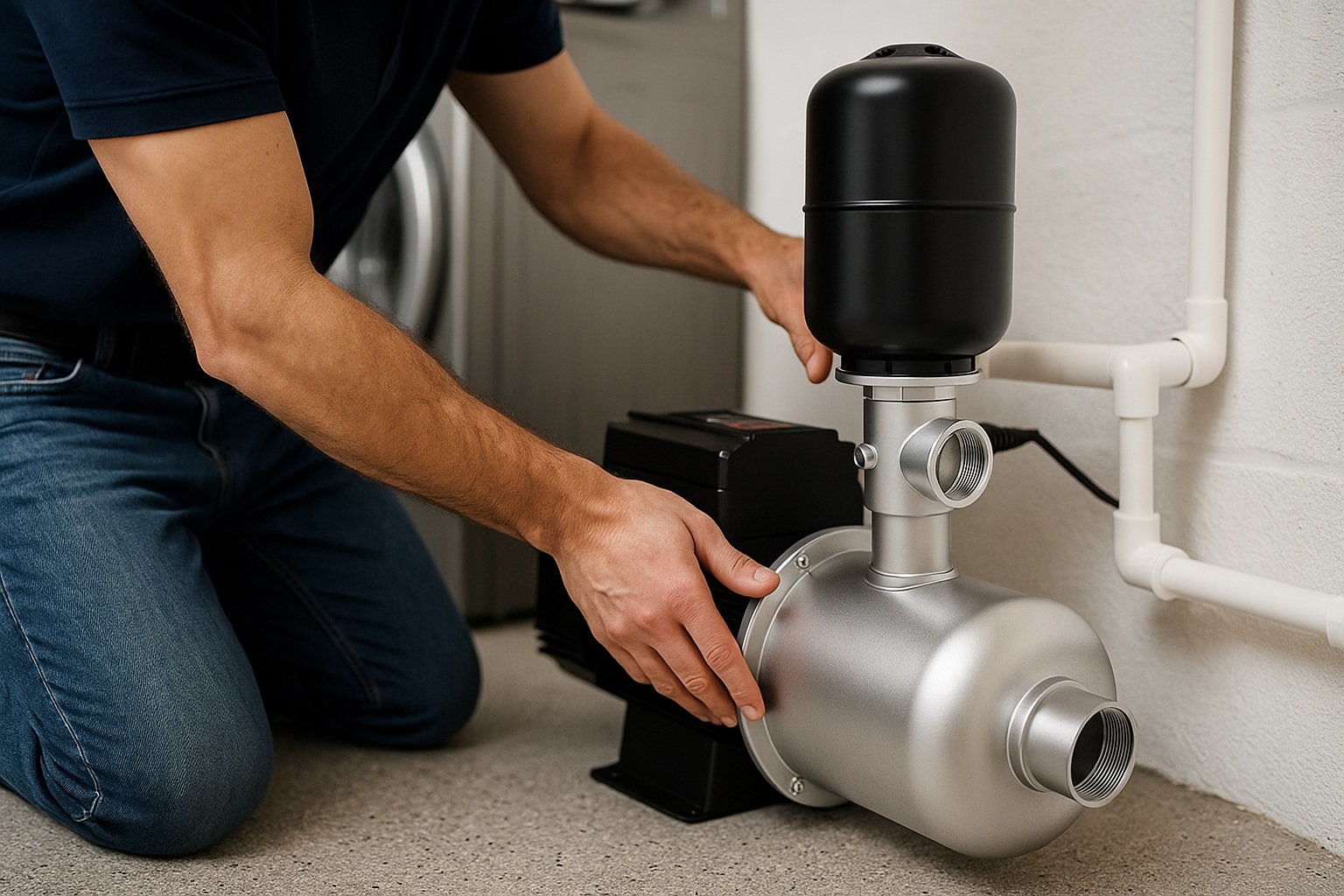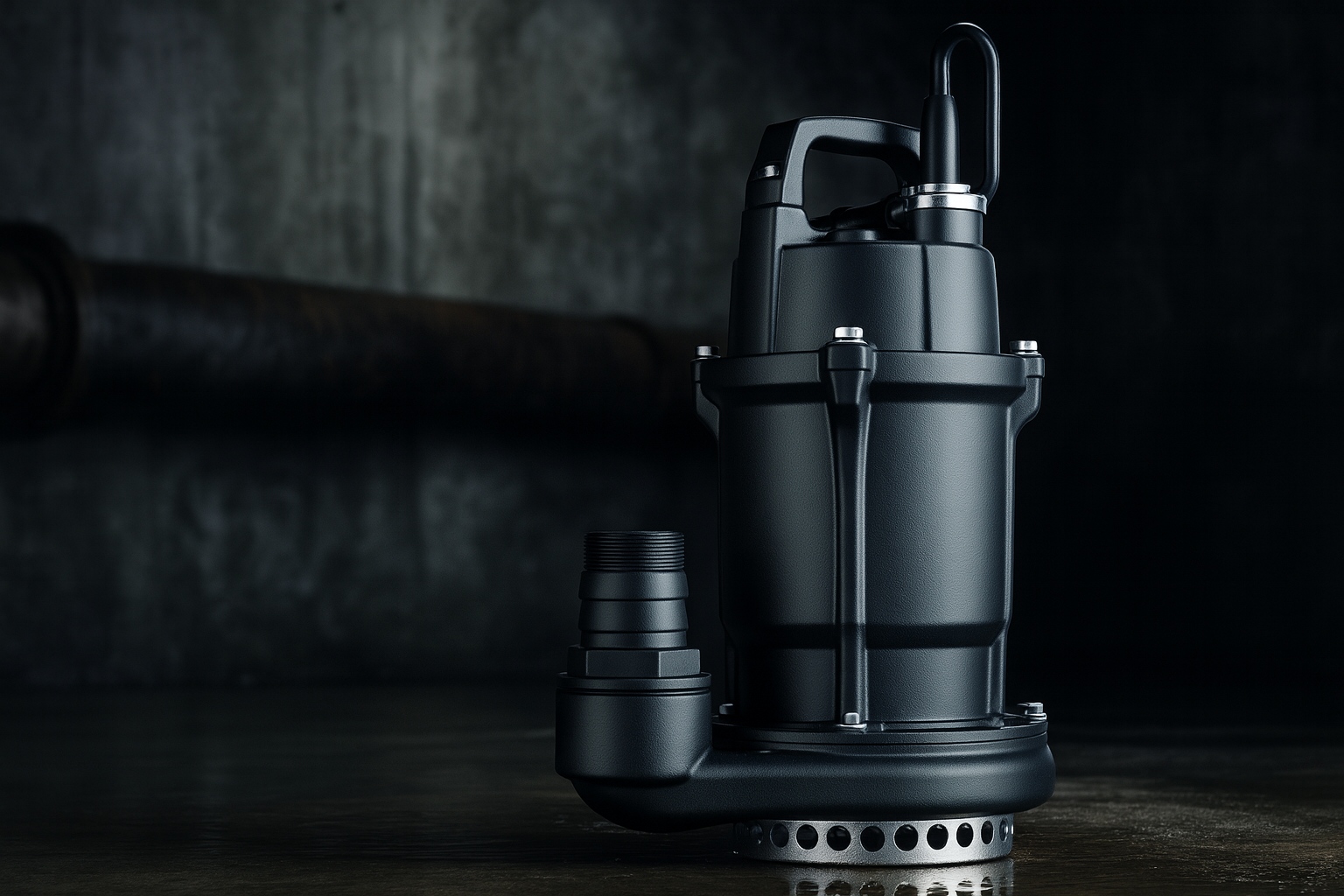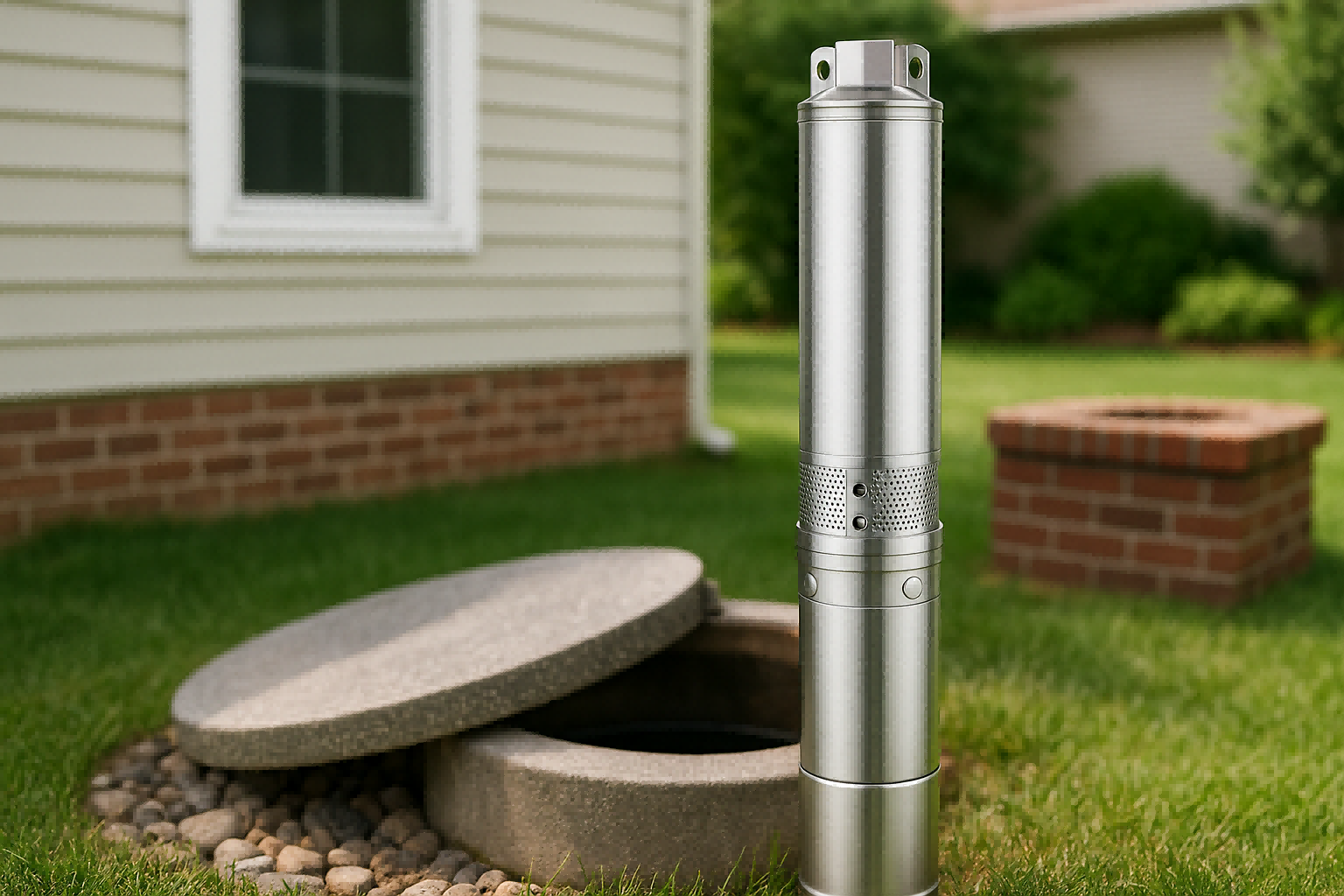Low water pressure is a daily frustration for many households.
It affects showers, taps, and home appliances.
This problem can be solved with the right equipment.
Yes, you can install a booster pump on your mains water supply.
However, regulations in places like the UK limit the direct boosted flow to 12 litres per minute. For higher flow rates, you need to use a system with a break tank or accumulator vessel.

Boosting your mains water can dramatically improve your daily life.
Many people believe it's not allowed, but that's a common misunderstanding.
You simply need to follow the specific rules for your region.
Understanding these rules and the available technology is the first step.
Knowing the difference between direct boosting and other methods is key.
This helps you choose the right solution for your home or project.
For installers, it means confidently specifying systems that meet both client needs and legal standards.
This article will guide you through the regulations.
We will explore the different technical solutions available.
You will learn how to achieve perfect water pressure, legally and effectively.
Can you boost mains water directly?
Is your shower weak and your tap just a trickle?
This is a classic sign of low mains water pressure.
A mains booster pump can be the simple solution you need.
You can boost mains water pressão, as long as the pump does not pull more than a set limit directly from the mains.
In the UK, for example, the Water Supply and Fittings Regulations state the pump's flow must not exceed 12 litres per minute.
Many homes experience flow rates well below this 12 litres per minute (l/min) threshold.
This can significantly impact the performance of modern plumbing systems.
Combi boilers and unvented cylinders often require a minimum flow rate to operate efficiently.
When the incoming flow is insufficient, these systems may not work at all.
A direct mains booster pump is designed specifically for these situations.
It is installed on the incoming water main to increase the flow rate up to the legal limit.
Understanding Direct Boosting Technology
A good booster pump should be more than just a motor.
Modern pumps use intelligent technology to provide the best performance.
Variable Frequency Drive (VFD) technology is at the heart of the most advanced systems.
- What is VFD? A VFD, or inverter, controls the pump's motor speed. Instead of running at full power all the time, it adjusts its speed based on the water demand.
- Constant Pressure: When you open a tap, the VFD senses the pressure drop. It instantly increases the motor's speed to maintain a constant, steady pressure. This eliminates fluctuations.
- Energy Savings: Because the pump only runs as fast as needed, it uses significantly less energy. This can lead to savings of up to 50% on electricity consumption compared to fixed-speed pumps.
- Quiet Operation: VFD technology, especially when paired with a Permanent Magnet Synchronous Motor (PMSM), results in extremely quiet operation. The noise level can be below 50dB, which is quieter than a library.
Key Features of a Modern Direct Booster Pump
When choosing a pump, look for features that ensure performance, durability, and safety.
A well-engineered pump will provide reliable service for many years.
The choice of materials and electronic protections are critical indicators of quality.
| Feature | Benefit | Why It's Important for Direct Boosting |
|---|---|---|
| VFD + PMSM Motor | Constant pressure, energy efficiency, and ultra-quiet operation. | Provides a luxury user experience without annoying noise or pressure drops. |
| Soft Start/Soft Stop | Reduces mechanical stress and prevents water hammer in pipes. | Protects your entire plumbing system and extends the pump's lifespan. |
| Wide Voltage Operation | Works reliably even with unstable power grids (e.g., 165V-260V). | Ensures consistent performance in areas with poor electrical infrastructure. |
| Built-in Protections | Guards against issues like dry running, overheating, and voltage spikes. | Prevents pump damage and ensures safe, automatic operation. |
A pump designed for direct boosting must be smart.
It needs to detect a 'no water' situation (dry running) and shut down automatically.
This prevents the motor from burning out.
Advanced systems will even try to self-prime and restart after a set period, checking if the water supply has returned.
This intelligent recovery saves energy and reduces the need for manual resets.
How do you boost water pressure beyond 12 l/min?
What if your home needs more water than the direct limit allows?
Large homes with multiple bathrooms often have this problem.
Running two showers at once could demand much more than 12 l/min.
To boost water flow beyond the regulated limit, you must use a system that doesn't draw directly from the mains.
This is achieved by installing an accumulator tank or a break tank with an integrated pump.
These systems store water first, then boost it around the home.
For projects requiring high flow rates, simply installing a more powerful pump on the mains is not an option.
It violates water regulations and can cause problems for the public supply network.
The solution is to create a buffer between the mains supply and your high-demand plumbing system.
This is where accumulator and break tank systems come in.
They comply with regulations because the powerful pump draws from the stored water in the tank, not the mains.
This allows for impressive flow rates.
You can achieve flows of 24, 48, or even over 80 litres per minute, depending on the system's size.
Deep Dive into High-Flow Solutions
There are two primary methods for achieving high-flow boosting while staying compliant.
Both involve storing water, but they operate in slightly different ways.
The choice depends on the existing mains pressure and the specific needs of the property.
1. Accumulator Systems
An accumulator is a vessel that stores cold water under pressure.
It contains a diaphragm or bladder with compressed air on one side.
As water from the mains fills the vessel, it compresses the air.
When a tap is opened, this stored pressure forces the water out at a high flow rate.
A small pump is used to top up the vessel, ensuring the mains draw stays within the legal limit.
- How it Works: The system accumulates water during periods of low demand. When demand is high, it delivers this stored water, supplementing the mains flow.
- Best For: Homes with reasonable incoming pressure but insufficient flow rate. The accumulator leverages the existing pressure to deliver high volumes of water.
- Key Advantage: It's a very energy-efficient way to provide a significant boost in flow rate for short periods of high demand, like running multiple showers.
- Scalability: You can link multiple accumulator vessels together to increase the stored water volume and potential flow rate. This makes the system adaptable for very large homes.
2. Break Tank Systems
A break tank system, like a "TankBoost" solution, provides the ultimate performance.
It involves a physical storage tank that is filled by the incoming mains supply via a float valve.
An integrated, powerful submersible pump sits inside this tank.
When water is needed, this pump activates and delivers high pressure and high flow throughout the property.
- How it Works: This creates a complete 'break' from the mains. The pump is entirely independent of the mains pressure and flow, drawing only from the water stored in the tank.
- Best For: Properties with very low incoming pressure and flow, or where the highest possible performance is required. It can deliver both high pressure (e.g., 3.0 Bar or more) and very high flow rates (e.g., 80 l/min).
- Key Advantage: It delivers consistent, powerful performance regardless of how poor the incoming mains supply is. It is the most robust solution for challenging situations.
The core of these advanced systems is a sophisticated, intelligent pump.
These pumps are not just about power; they are about control, durability, and safety.
A high-quality pump in a break tank system will feature a stainless steel or brass pump body and impellers.
This ensures it can handle continuous use and different water qualities.
Crucially, the electronics must be protected from the wet environment, often using a fully sealed, waterproof PCB to prevent moisture damage and extend the unit's life significantly.
What makes a booster pump reliable and durable?
You're investing in better water pressure for the long term.
A pump failure is not just an inconvenience; it can be a costly problem.
The reliability of a booster pump depends on its engineering and materials.
A reliable booster pump is defined by its build quality and protective systems.
Look for premium materials like stainless steel, advanced cooling, and comprehensive electronic protections against common faults like overheating, voltage spikes, and dry running.
A waterproof controller is essential.
When evaluating a booster pump's durability, you must look beyond the advertised pressure and flow.
The internal components and the intelligence of the control system are what determine its lifespan.
For business owners like importers and distributors, sourcing a reliable product is paramount.
It reduces warranty claims, protects your brand reputation, and ensures customer satisfaction.
A pump is a mechanical device that operates in a challenging environment with water, heat, and electrical stress.
Superior engineering directly addresses these challenges.
The Pillars of Pump Durability
A truly durable pump is built on three pillars: mechanical excellence, electronic resilience, and smart protection.
Each aspect plays a crucial role in the pump's ability to perform reliably for years.
1. Superior Mechanical and Material Engineering
The physical parts of the pump must withstand constant stress and potential corrosion.
- Motor Design: A high-efficiency motor with a low temperature rise (e.g., ≤50K) runs cooler and lasts longer. Using high-grade silicon steel in the stator and Class F insulation wire provides better performance and thermal resistance.
- Premium Bearings: High-quality bearings from reputable brands (like NSK or C&U) offer higher precision, quieter operation, and a significantly longer lifespan than generic alternatives.
- Impeller and Pump Body: Using AISI304 stainless steel or brass for impellers and pump casings is critical. These materials offer excellent resistance to corrosion and wear, ensuring the hydraulic performance does not degrade over time.
- Advanced Cooling: An effective cooling system with optimized airflow can improve heat dissipation efficiency by over 80%. This keeps the motor at a safe operating temperature, which is the single most important factor for motor longevity.
2. Uncompromising Electronic Reliability
The pump's "brain" is its Printed Circuit Board (PCB) or controller.
This is often the most vulnerable component.
- PCB Potting: The gold standard for electronic protection is potting. This involves completely sealing the main controller board in a waterproof, dustproof resin.
- IP67 Protection: This potting process gives the electronics an IP67 rating, making them impervious to moisture, condensation, and dust. This feature alone can prevent over 95% of failures related to moisture and extend the controller's life by 3 to 5 years.
3. Comprehensive "14-Shield" Protection System
An intelligent pump protects itself.
A comprehensive suite of sensors and software algorithms actively monitors the pump's condition and safeguards it from damage.
| Protection Category | Specific Safeguards |
|---|---|
| Electrical | Over/Under Voltage Protection, Overcurrent Protection, Phase Loss Protection. |
| Thermal | Motor Overheating Protection, Driver Board Temperature Protection, High Water Temperature Protection. |
| System | Dry Run Protection: Intelligent multi-stage algorithm stops the pump and periodically re-checks for water. Antifreeze Protection: Runs the pump briefly in freezing conditions to prevent ice damage. |
| Sensor | Pipeline Leak Warning, Sensor Failure Warnings. |
This multi-layered approach to design ensures that the pump is not just powerful, but also a robust and reliable long-term investment.
It transforms a simple water pump into a sophisticated and resilient piece of home infrastructure.
How smart technology elevates a booster pump?
A powerful pump is good, but a smart pump is better.
Modern smart features transform a booster pump from a simple appliance into an intelligent water management system.
This adds convenience, enhances safety, and improves efficiency.
Smart technology enables features like constant pressure, remote control via WiFi, and intelligent linking of multiple pumps.
It also provides detailed, real-time system monitoring, giving users and installers complete control and insight into the pump's operation.
The "smart" aspect of a modern VFD booster pump is what sets it apart.
It's about having a system that not only responds to demand but also anticipates problems, communicates its status, and offers a level of control that was previously impossible.
For a property owner, this means peace of mind and effortless operation.
For an installer, it means easier setup, better diagnostics, and happier clients.
This intelligence is delivered through the pump's sophisticated controller and user interface.
The Brains of the Operation: Control and Monitoring
A user-friendly interface is essential, but it should also provide access to deep system data for professional installers or curious homeowners.
The best systems balance simplicity with advanced functionality.
1. Intuitive User Interface
Despite the complex technology inside, operating the pump should be simple.
- Simple Controls: A clear panel with buttons for Power On/Off, and Up/Down for pressure adjustment is all that's needed for daily use.
- Clear LED Indicators: At-a-glance LEDs for status (e.g., Constant Pressure Mode, Water Shortage, Fault) provide immediate visual feedback without needing to navigate menus.
- Easy Factory Reset: A simple long-press of a button should restore the pump to its default settings, simplifying troubleshooting.
2. Advanced Real-Time Data Monitoring
For installers and technical users, access to live operating data is invaluable.
Advanced pumps allow the user to cycle through a display showing critical real-time parameters.
This provides a window into the pump's soul.
| Display Code | Parameter Displayed | What It Tells You |
|---|---|---|
| A.xx | Water Temperature (°C) | Monitors if the water is too hot, protecting the pump. Useful for solar-heated systems. |
| P.xxx | Real-time Power (Watts) | Shows exactly how much energy the pump is consuming, highlighting its efficiency. |
| xxxx | Motor Speed (RPM) | Visualizes how the VFD is adjusting to demand, confirming its proper function. |
| U.xxx | Input Voltage (Volts) | Helps diagnose power supply issues and confirms the pump is operating within a safe range. |
| t.xx | PCB Temperature (°C) | A key indicator of the electronic controller's health and cooling effectiveness. |
| E.xx | Error Code Display | Provides a specific code when a fault occurs, allowing for quick and accurate diagnostics. |
3. Next-Generation Smart Features
Beyond the basics, leading-edge pumps offer connectivity and system-level intelligence.
- Optional WiFi Control: The ability to connect the pump to a smartphone app via WiFi opens up a world of possibilities. Users can monitor status, adjust pressure, and receive fault notifications from anywhere.
- Twin Pump Link Mode: For larger commercial applications or homes where uptime is critical, two pumps can be linked together. They can work in tandem to meet high demand or operate in a primary/backup mode, where one pump automatically takes over if the other fails.
- Pressure Tank Integration: Pairing the pump with a small pressure tank (1.5L to 5L) can reduce pump start/stop cycles by up to 70%. This simple addition dramatically reduces wear on the motor and electrical components, further extending the pump's life. It also helps to absorb small pressure fluctuations and minor leaks without the pump needing to start.
These smart features are not gimmicks.
They are practical engineering solutions that enhance performance, improve reliability, and provide a superior user experience.
Conclusion
You can legally and effectively install a booster pump on your mains water.
The key is choosing the right system—a direct booster for modest gains or a tank-based system for high-flow needs.
FAQs
Can a booster pump damage my pipes?
No, a modern booster pump with a soft-start feature will not damage your pipes. It prevents water hammer by gradually increasing pressure, protecting your plumbing system from sudden shocks.
How much electricity does a booster pump use?
An intelligent VFD booster pump is very energy-efficient, using up to 50% less electricity than older models. It only runs as fast as needed to maintain pressure.
Does a water booster pump increase pressure or flow?
A booster pump increases both pressure and flow. Modern VFD pumps maintain a constant user-set pressure by adjusting the flow rate to meet the household's water demand.
Do I need a plumber to install a booster pump?
Yes, it is highly recommended to have a qualified plumber install a booster pump. They will ensure it is installed correctly, safely, and in compliance with local water regulations.
Can a booster pump be installed outside?
Some booster pumps are designed for outdoor installation, featuring UV-resistant housing and waterproof electronics (look for IP65 or higher). Always check the manufacturer's specifications before installing a pump outside.
How do I know if I need a booster pump?
If you experience weak showers, slow-filling cisterns, or poor performance from your boiler, you likely have low water pressure. A simple pressure and flow test can confirm this.
Can a booster pump be too powerful?
Yes, oversized pumps can waste energy and cause excessive pressure. It's important to choose a pump that matches your home's needs and can be adjusted to a safe pressure level.
Will a booster pump be noisy?
Modern VFD booster pumps with permanent magnet motors are designed for ultra-quiet operation. Many models run at less than 50 decibels, which is quieter than a normal conversation.








